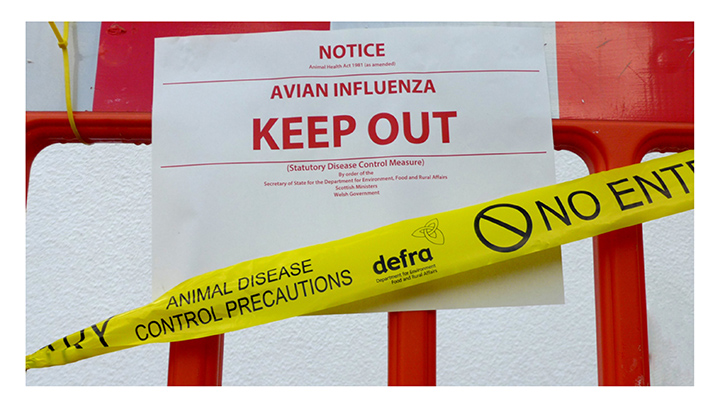The UK’s bird flu outbreak has reached a new milestone, with the total number of confirmed highly pathogenic avian influenza (HPAI) H5N1 cases this season rising to 50, following the latest detection in Suffolk.
The most recent case, confirmed on 21 November, involves commercial poultry near Claydon in Mid Suffolk. Authorities have imposed a 3km protection zone and a 10km surveillance zone, and all poultry on the affected premises will be humanely culled.
The confirmation comes amid a series of new outbreaks across Great Britain in recent days. On 19 November, HPAI H5N1 was detected in commercial poultry near Driffield, Bridlington and The Wolds in the East Riding of Yorkshire.
Further cases were confirmed on 18 November. One involved a fourth large commercial poultry unit near Milford Haven in Pembrokeshire. Another was identified in a small backyard flock near Lawshall in Babergh, Suffolk.
Mandatory housing measures continue under the Avian Influenza Prevention Zone (AIPZ) in England and Wales. Bird keepers are required to follow strict biosecurity rules, and anyone with more than 50 birds, or who sells eggs, poultry products or live birds, must house them to reduce the risk of transmission.
This season’s first HPAI cases were confirmed on 9 October in Northern Ireland, 11 October in England, 25 October in Wales and 12 November in Scotland. With the UK now recording 50 confirmed cases so far in the 2025–26 outbreak season, the country no longer meets the World Organisation for Animal Health (WOAH) status of being free from highly pathogenic avian influenza.
England has recorded 39 cases this season, Wales seven, Scotland one and Northern Ireland three, bringing the total to 50. Although the current outbreak remains smaller than some previous seasons, it represents a sharp rise compared with the 2023–24 season, which saw only six confirmed cases. In earlier seasons, there were 81 cases in 2024–25, 207 cases in 2022–23 and 158 cases in 2021–22.


